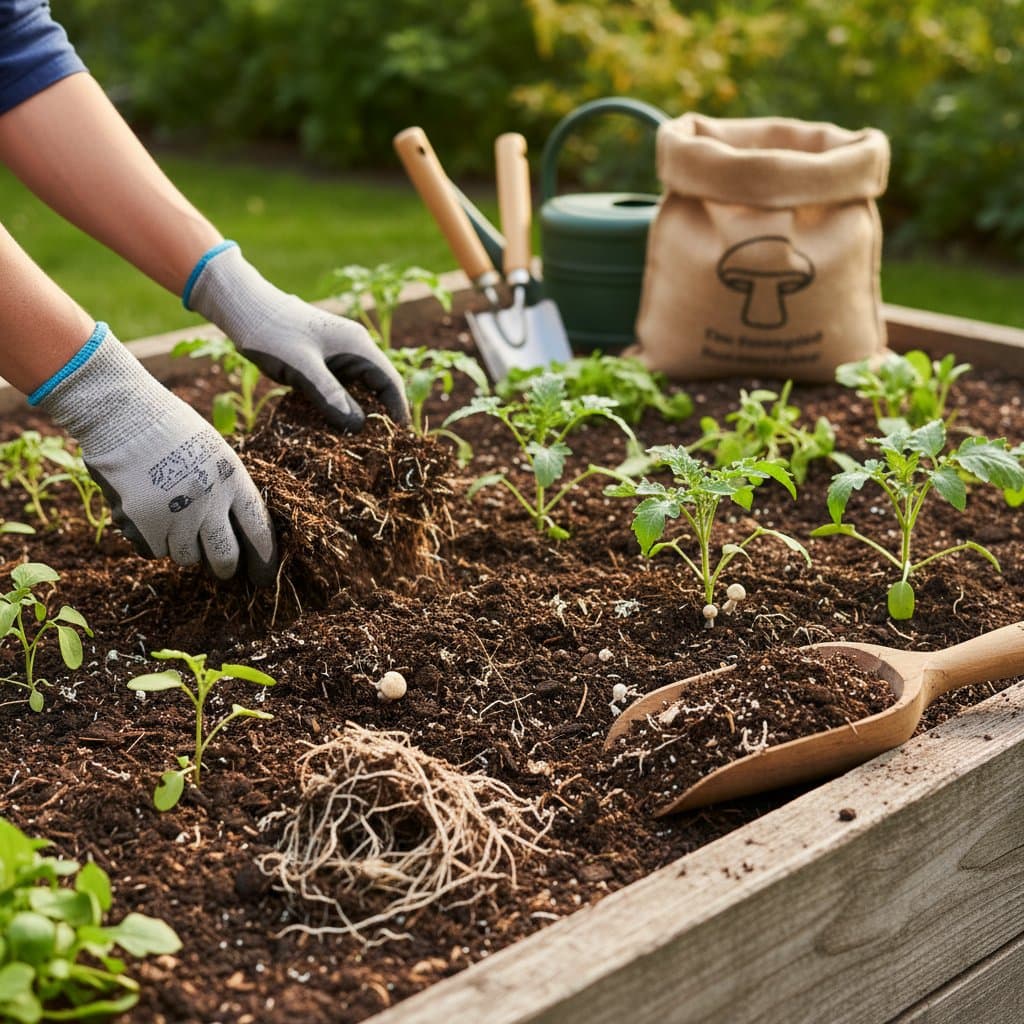Revitalizing Backyard Gardens with Mushroom Compost
Home gardeners often envision abundant harvests of flavorful tomatoes and vibrant foliage. Yet, depleted soil can hinder such outcomes, resulting in lackluster growth. Mushroom compost offers a reliable solution, serving as a nutrient-rich amendment that restores soil vitality and supports robust plant development.
Understanding Mushroom Compost
Mushroom compost derives from the spent growing medium used in commercial mushroom production. It consists primarily of pasteurized horse manure, straw, gypsum, and supplemental organic materials. After mushrooms are harvested, this substrate undergoes further aging and screening to produce a stable, crumbly product suitable for garden use.
This material abounds in organic matter and beneficial microorganisms, providing a gentle yet effective means to enrich soil. Its production repurposes agricultural byproducts, promoting sustainability by diverting waste from landfills.
Key Benefits for Soil and Plants
Enhanced Soil Structure
In clay-heavy soils, it promotes aeration and drainage. For sandy types, it increases water retention. Overall, roots establish more firmly in the resulting balanced medium.
Boosted Microbial Populations
Beneficial bacteria and fungi introduced by the compost decompose organic residues, unlocking nutrients for plant uptake and maintaining ecological balance.
Superior Moisture Management
High organic content allows the material to absorb and hold water efficiently, reducing irrigation needs during dry periods.
Sustainability Advantages
As a recycled product, it aligns with regenerative practices, minimizing environmental impact while improving soil carbon levels.
Practical Application Guidelines
Effective use of mushroom compost requires attention to timing and integration methods to maximize benefits.
Establishing New Beds:
Combine one part mushroom compost with two parts native soil before planting. This mixture provides an optimal starting point for root development.
Maintaining Existing Beds:
Apply a 1- to 2-inch layer as top dressing annually in spring or fall. Incorporate lightly into the surface or allow natural breakdown through watering and tilling.
Container and Raised Bed Use:
Mix equal parts with potting soil or coir for a lightweight, fertile blend. Adjust ratios based on plant needs for drainage-sensitive species.
Lawn Improvement:
Spread a thin 0.5-inch layer over turf in early spring, followed by thorough watering. Repeat every two years to gradually amend underlying soil.
Important Considerations
Mushroom compost typically exhibits a pH of 6.5 to 7.5, rendering it alkaline. Avoid heavy applications around acid-preferring plants such as blueberries or azaleas; instead, dilute with acidic amendments like pine needles to neutralize effects.
Excessive use may lead to nutrient imbalances or salinity accumulation. Apply in moderation, testing soil periodically to monitor changes. View it as a foundational conditioner rather than an intensive fertilizer.
Observed Outcomes in Practice
Gardeners report noticeable improvements after consistent application. In one case, compacted clay soil in raised beds softened over two seasons, attracting earthworms and yielding robust tomato plants with increased fruit size and flavor.
Such transformations extend beyond aesthetics. Produce exhibits enhanced taste and nutritional value, while flowers display prolonged blooms. The garden ecosystem gains resilience against pests and drought.
Sourcing and Cost-Effectiveness
Mushroom compost remains accessible and economical, often available in bulk from mushroom producers or garden suppliers. Seek out "spent mushroom substrate" for authentic quality. Community composting initiatives may provide it at low or no cost.
For a homemade alternative, layer straw, aged manure, and gypsum in a bin, allowing six months of decomposition. This yields a comparable amendment with reduced potency.
Integrating with Complementary Materials
Mushroom compost enhances outcomes when combined strategically. Pair it with standard compost for broader nutrient profiles. Incorporate biochar to sequester carbon and improve longevity. Blend with leaf mold for added acidity and aeration in tailored mixes.
This versatility supports regenerative strategies, emphasizing soil biology over chemical inputs for enduring fertility.
Sustaining Soil Health Long-Term
Incorporating mushroom compost simplifies garden care. Moisture retention reduces watering frequency, while improved structure suppresses weeds. Plants develop greater tolerance to environmental stresses.
Monitor growth patterns across species. If foliage dominates over fruit set, indicating excess nitrogen, reduce applications accordingly. Regular soil tests guide refinements, ensuring balanced progress.
Implementing Changes Effectively
To address subpar yields or sparse growth, introduce mushroom compost to a test area first. Evaluate soil texture, infiltration rates, and plant vigor over one season. These observations confirm its suitability for broader adoption.
By prioritizing soil nourishment, gardeners achieve sustainable productivity. Mushroom compost facilitates this process, yielding a resilient, thriving landscape.




